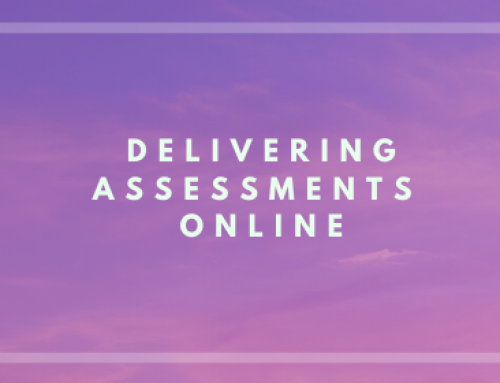Deep Learning
Revisiting the concept of ‘deep learning’
Deep and surface learning
Deep learning- a term originally coined to articulate the concept of ‘going beyond the surface’ or incorporating new learning into your existing knowledge frameworks (Marton and Saljo, 1976) has undergone a resurgence in recent times. This has occurred both in terms of machine learning theory and the human version- but setting aside the engineering connotations for the purposes of this post- let’s consider the L&T applications of deep learning that we can harness in our classrooms.
Recently, discussion of ‘deep active learning’ has emerged as a marriage of deep, and active, learning theories (Matsushita, 2015). The concepts are well aligned, as deep learning requires students to reflect on their learning and apply it to real life experiences, making connections, analysing and evaluating concepts. Active learning similarly requires student involvement in their learning, with students actively exploring concepts, evaluating, making connections and synthesising information via applied tasks. Considering the two processes simultaneously (‘deep active learning’) results in activities that allow students to participate in knowledge building by applying the learning to authentic contexts, evaluating that process and then reflecting on ‘what it means’ in terms of their own knowledge frameworks.
Strategies that support deep active learning
Deep active learning is facilitated by the teacher (not lead by the teacher) and hence requires student “buy-in” to the process. Students need to be motivated and enabled to take responsibility for their own learning- and hence strategies that encourage deep active learning also encourage the development of independent learners, which is of key importance in the university learning environment.
There are a number of strategies academic and teaching staff can adopt to encourage deep active learning in their classrooms:
• Real world application of learning- authentic learning experiences that go beyond just assessment tasks. This can include: students working with case studies; taking part in role plays; solving real-time industry/disciplinary problems in class (or in groups online etc) and sharing the results; evaluation of current issues facing their discipline, with discussion/reflection re how current and future changes will affect them as graduates.
• Students as active participants in knowledge development- discussions and activities in groups and individually, followed by reporting back to the larger class. Topics/key messages are re-capped by the teacher at the end of the session and linked to specific learning outcomes/requirements.
• Opportunities for students to (1) reflect, and (2) self-assess, are vital in supporting deep active learning.
Allow time for reflection and assimilation of ideas into existing knowledge frameworks (at the end of a new topic, at the end of each class). See ‘One-Minute Reflections’ for a simple activity. Reflection doesn’t always come naturally- students may initially need support in developing this skill- Young (2018) provides some useful approaches to developing reflective practice in a student cohort.
Provide opportunities for students to assess their progress through the course (e.g. week 2, week 6 (?) and at the end of semester). This could be as simple as an online quiz or a classroom ‘Kahoot’- with time/encouragement to reflect on the outcome. Encouraging students to self-assess is a particularly powerful way of encouraging independent learning: identifying ‘how they are travelling’ in comparison to where you expect them to be, and/or where their peers are up to, leads students to re-evaluate their own learning processes at regular intervals and leads to help-seeking behavior.
- The ‘flipped classroom’ has become one of the most common concepts in deep active learning. Students are provided with investigative tasks (readings, activities, online discussions) that introduce them to the topic matter before they come to class. Canvas provides a wealth of opportunities to provide pre-class exposure to ideas, including access to platforms such as Lynda.com. The pre-class work needs to be made integral to what happens in class (otherwise students won’t bother completing it beforehand) and is most effective when the pre-class activities are designed to foster curiosity rather than provide clarity/answers. The development of understanding/clarity should be a shared journey that occurs within the class (guided by the teacher but directed by the questions and developmental needs of the class). This gives students opportunities to bring their own perspectives and experiences into the process, thus entwining new learning with their existing knowledge frameworks.
What enhances deep active learning?
- Scaffolding- particularly where students are new to university learning and/or come from more directed learning environments. Consider the skills that students will require to fully participate in the activities and provide developmental opportunities for these ‘soft skills’. Be explicit about what you want to see happening in the classroom, and why it is valuable (link to workplace outcomes/professional development in your discipline, for example the need to collaborate, present information, take part in discussions, reflect on new information and continually adapt to the world around you).
- If you are involved in the design of assessment activities, design tasks that encourage students to solve problems and to integrate new knowledge using existing knowledge. Find ways to assist students put the new knowledge into context. This might include opportunities for group involvement, discussion, and reflection with their peers for assessment purposes.
References
- Marton, F. & Saljo, R. (1976) On qualitative differences in learning: I- outcome and process. British Journal of Educational Psychology 46(1), 4-11
- Matsushita, K. (ed.) (2015). Deep active learning: Toward greater depth in university education. Springer (eBook).
- Young, M.R. (2018) Reflection fosters deep learning: The ‘reflection page & relevant to you’ intervention. Journal of Instructional Pedagogies 20, 1-17. Retrieved from: https://www.aabri.com/ manuscripts/172754.pdf





